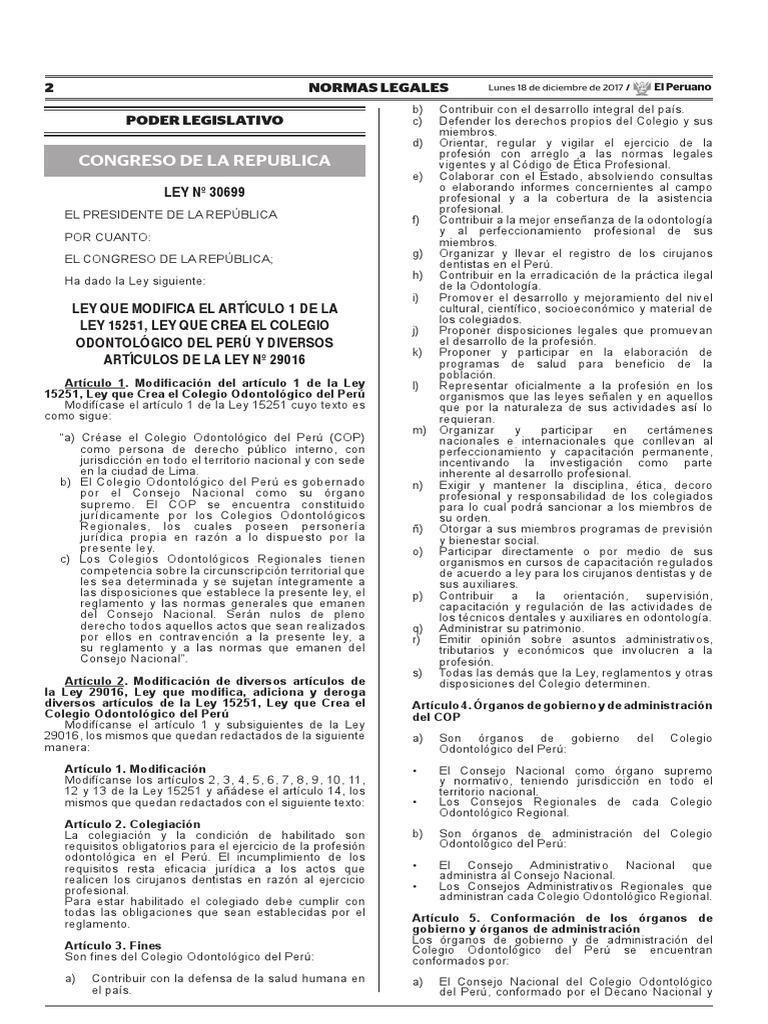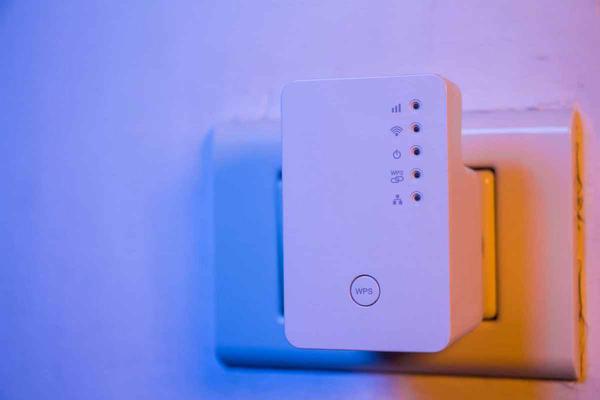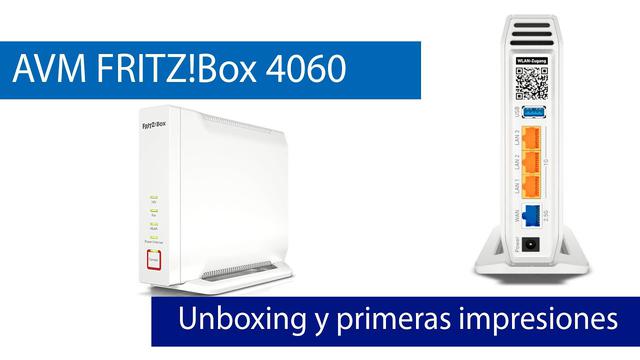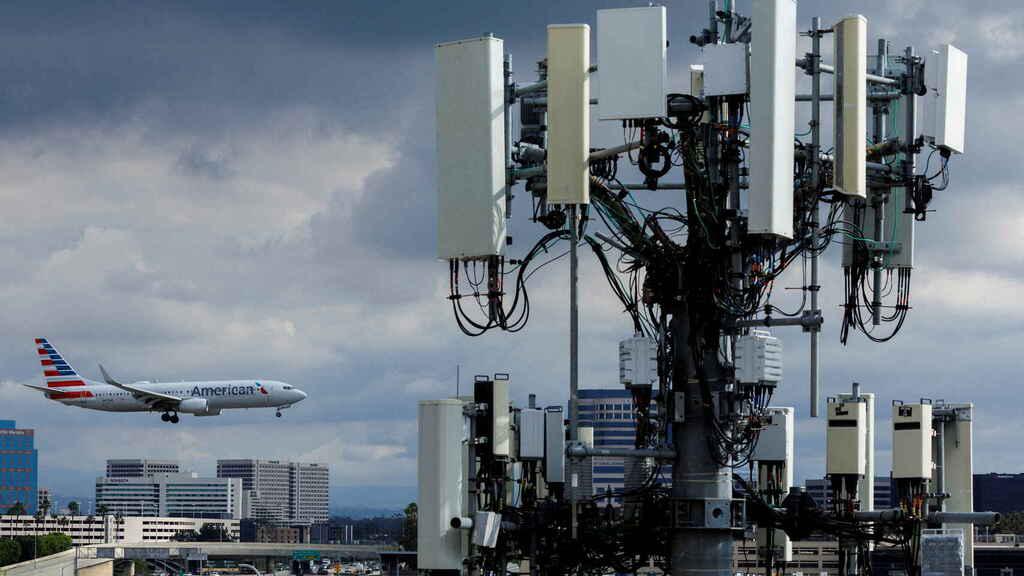Invertia 'Smart dust': when even a tiny speck of dust is smarter than you
Talking about smart dust sounds strange, I know. What the hell is that? Has someone gone crazy and added an artificial intelligence notch to the dust that collects in the corners of my house? Are landfills the new technological epicenter? Do not think that you are strange when asking yourself these questions: they are the same questions that we all ask ourselves when hearing about this term for the first time, not even profuse in the scientific literature.
The truth is that we have to look for the origin of this extravagant concept of smart dust, as on so many other occasions, in science fiction. It is in the magic of the imagination where technologies so common in our day-to-day life have emerged, such as submarines (devised by the prolific Jules Verne, a master of being far ahead of the engineering of the time), voice assistants (introduced already in '2001: A Space Odyssey' by Stanley Kubrick) or autonomous cars. Even Harry Potter's invisibility cloak is now the subject of study with various military projects that are managing, with more or less success, to make it a reality.
In the precise case of smart dust, there are many precedents in science fiction that refer to similar technologies. Stanislav Lem was already talking about nanoparticle nebulae in his book 'The Invincible' in 1964.
Another recurring premise is ingestible devices, in which the protagonists of the novel were miniaturized to be able to navigate through the veins of a human aboard a ship of the same size. However, such an extreme still belongs to the field of the most futuristic reverie. More common if possible, in action movies, is the concept of these intelligent specks as weapons invisible to humans or as a kind of network of miniaturized spies that completely monitor our lives.
It is not easy to define what something as diffuse as smart dust consists of. But we can find a very interesting starting point in a much more recent novel, 'Prey', written in 2002 by the commendable and controversial Michael Crichton, inventor of the techno-thriller and father of classics such as 'Jurassic Park'. In it, a fictitious company has managed to design a revolutionary medical diagnostic system based on nanotechnology. It is a swarm of miniature robots that are self-sufficient and ultimately beyond human control.
Michael Crichton, inventor of the 'techno-thriller' and one of those who most specified the concept of 'smart dust' in fiction.
The difference is that, in the case of Crichton's vision, the formation of these specks responded to a kind of bacteria that was endowed with the necessary knowledge to develop specific functions. The real approach to smart dust, on the other hand, is based on pure silicon computing, the same as we find in any computer equipment we know of.
From science fiction to science
This extensive and recurring library of fiction around smart dust contrasts with the diffuse, sparse, and confusing newspaper library that we find when talking about science (just plain). So much so that it is not clear what the origin of this technology is or if it can even materialize at a specific moment in history.
For some experts, we must look for the germ of this idea in the DARPA agency, the agency in charge of the most innovative projects of the US military. This organization would have been working for decades not only on the autonomous drones that we all know, but also on much smaller robots, which could be used for observation missions in enemy territory or to monitor the vital signs of its soldiers in the field. of battle. Of these projects, it seems that none has yet reached the stage of actual implementation.
For others, the true father of these intelligent particles is a company called Dust Networks (now renamed Linear Technology, formerly a partner of the giant Cisco), specialized in creating connectivity systems for the thousands of connected devices that we can find in industrial settings. They did, and here is their merit, basing that communications network on millimeter chips.
Meanwhile, in the academic field there is a commitment to grant the authorship of this term to Kristofer Pister, a researcher at the University of California, Berkeley. Not surprisingly, his is the first explicit mention of smart dust. In 1997, Pister and his colleagues coined this term to describe the network of millimeter sensors (each considered a "speck") that they were working on.
“Integrated with superior computing efficiency, wireless radios, and sensing technology, smart dust will be a fairly complete solution for studying real-time data about people, industries, cities, and the natural environment,” explained the researcher, who believed that our society would quickly become plagued by these countless tiny sensors, no bigger than grains of rice. Two decades later, that premonition is still in its infancy, but it seems more plausible than ever.
Kristofer Pister, inventor of 'smart dust'. Photo: YouTube.
Despite the consensus on the relevance of Pister in the gestation of this concept, we could stay in this comfortable time machine and hit the same mark on the particular treasure hunt: there are those who find in the great Richard Feynman the original approach of intelligent dust . It was in 1959, when this remarkable physicist defended that "there is still a lot of space in the small". Is this statement enough to consider him the father of a revolutionary concept of miniaturized computing? Yours is the judgement.
From a technological point of view, we find the same discrepancy among the experts when pointing out what would be the most immediate antecedent to smart dust. For some, the key is connectivity, so the ancestor of smart dust would be the MBus, an interconnection system designed at the University of Michigan specifically for millimeter-scale computing equipment, capable of consuming just 3.5 pJ per bit and chip. .
For others, the technical embryo of these specks is found in microelectromechanical systems (MEMS). This class of microsystems -which already moves a market of more than 9,350 million dollars a year, according to Yole Développement- is not restricted solely to smart dust, but is a broader category under which any computer product that is produced can be included. scales from one micrometer (one millionth of a meter) to one millimeter (one thousandth of a meter).
But what is smart dust?
Whoever is the father of the creature, in broad strokes we are talking about specks (small microelectromechanical systems connected wirelessly and energetically autonomous), geographically dispersed, sensitive to light, temperature, location, pressure, vibrations, magnetism or certain chemical compositions. These are millimeter-scale devices or beyond, barely perceptible to the human eye, which can not only sensorize our environment, but can theoretically also carry out actions without human intervention based on the information they obtain.
“Advances in wireless communications and microelectronic mechanical systems technologies have enabled the development of networks of a large number of low-cost, low-power, multifunctional small sensors”, reads a concise definition by scientists Imad Mahgoub and Mohammad Ilyas.
“Wireless sensor networks consist of a large number of nodes that can be deployed randomly and densely. Nodes are small electronic components capable of sensing many types of information from the environment, including temperature, light, humidity, radiation, the presence or nature of biological organisms, geological features, seismic vibrations, specific types of computer data, and further". And it has been precisely these recent advances in technique that have made it possible for these components to be small, powerful and energy efficient, capable of collecting, processing and communicating valuable information to other nodes and to the outside world.
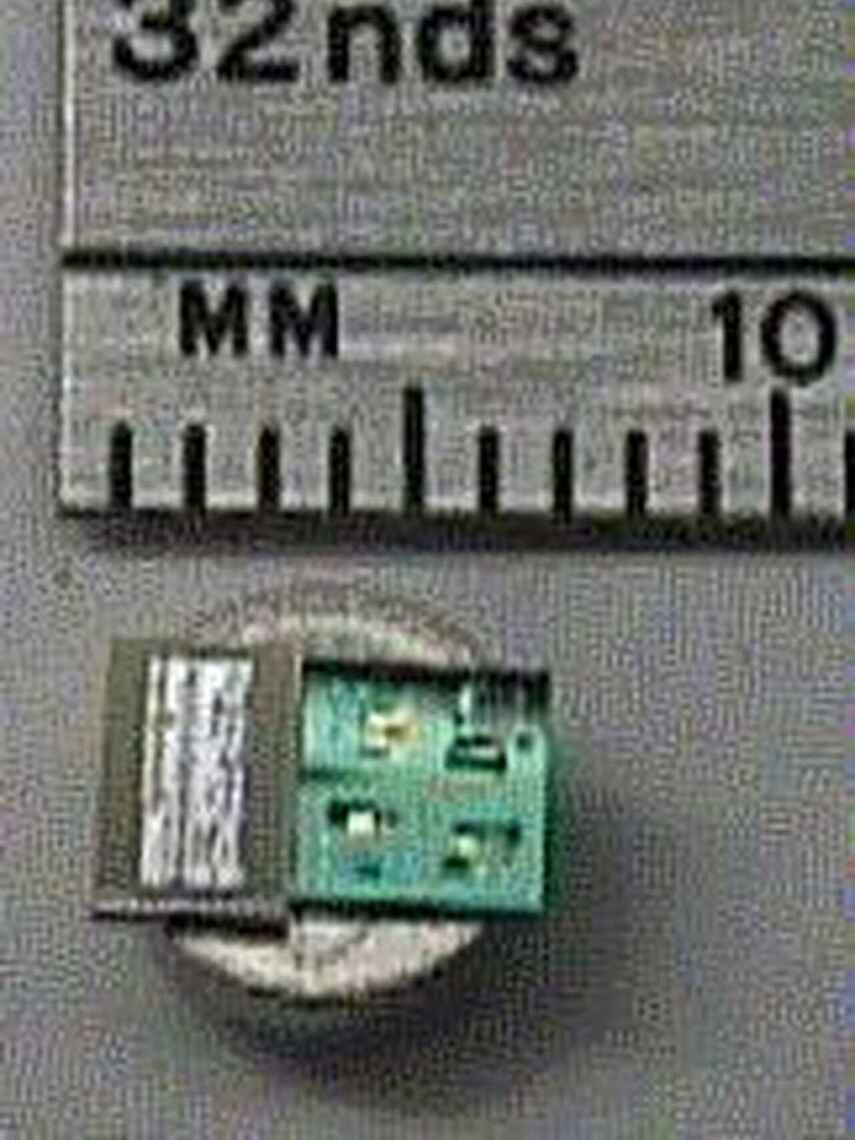
Are definitions too dense? It is not by chance: we are trying to combine several disparate techniques and technological trends in the same final product. In fact, each of these newly minted specks of dust is made up of three large elements: the sensors that detect and interact with the environment, the processing systems to perform local calculations, and the telecommunications subsystem, with which to send and receive data from and to the outside.
In those, smart dust constitutes the next era of computing, the next step after the advent of the Internet of Things and edge computing. The culmination of hyperconnectivity that 5G brings with it. The masterpiece of the path traveled by the semiconductor industry towards the miniaturization of chips. A technology that will not be a mere evolution, but a full-blown disruption, not so much because of the enormous technical challenges it entails, but because of the new possibilities that will open up before us.
Microelectromechanical systems
Don't worry if reading such a word you had to go back over each of its letters and, even so, you still don't understand anything. These wireless microelectromechanical systems (known by its acronym in English, MEMS) are, in essence, simple computers with their processor on duty, their Internet connection, and various input interfaces in which we will replace the keyboard and mouse with temperature sensors. , cameras of all kinds, accelerometers, etc.
Where is the fun then? As we have already anticipated, sometimes size does matter. And this is one of those situations: MEMS is produced on a millimeter scale or -in a still utopian future- micro or nanoscopic, practically impossible to perceive by the human eye. Now let's reconsider how to reduce to less than the size of your fingernail everything that today integrates an electronic device, including the always tedious and bulky batteries that provide a completely autonomous power source.
To put ourselves in situation, a nanometer is equal to one billionth of a meter (1 nm = 10−9 m) or one millionth of a millimeter. The diameter of a ribosome is about 20 nm, and the human lungs can only remove particles larger than 200 nanometers. This is the scale on which smart dust seeks to carve out a leading role within a few decades.
Before, waiting for the miniaturization of electronics to take its course, we will be on the millimeter scale, equally impressive: a grain of rice usually measures about five millimeters, compared to 40 for a common worm or 55 for a worm's egg. hen.
We are therefore looking at a small, very small, digital device that we can hardly see or touch, and that inside it can carry an endless number of sensors, be connected in real time with a data center and, in the event that endowed with robotic arms (again, in an extraordinarily small size), capable of also carrying out actions in our real environment.
An intelligent speck of dust barely five millimeters.
All of this, both the data collection and the decisions of the MEMS or their movements, can be managed remotely, like someone controlling a remote-controlled car or a drone, and also -this is where the madness breaks out- locally , with a behavior defined by an artificial intelligence system that has previously been installed on the computer.
Pister himself, together with his colleagues Warneke, Last and Liebowitz, considers size in this double aspect, the great challenge and the great promise of smart dust: “Exploring the technological limitations of micro-manufacturing is our fundamental goal. Due to their discreet size, substantial functionality, connectivity and low cost, these specks will facilitate new ways of interacting with the environment, offering more information from more places in a less intrusive way (…) Smart dust requires both evolutionary and revolutionary advances in miniaturization , integration and energy management”.
With this, it is clear that the first challenge facing the industry is to reduce the size of current computing devices to the scale required by smart dust.
“Currently we are producing equipment in sizes up to five millimeters, but we have to go down to one millimeter. Things get complicated when we take into account that there are limits in the world of electronics, since as the size is reduced, the voltage differential is also reduced, which makes it impossible to function”, José Luis Pérez explained to me some time ago. , Penteo analyst in Spain. “As with the Internet of Things, we must significantly increase the autonomy of these specks, although in this case there are new factors to take into account such as the distance and frequency in which they are from each other. Regarding the cost, we already know that with the IoT it is not being cheap to scale it to large deployments, a problem that will be more than reproduced in the case of smart dust, although, of the three challenges, it will be the one that will be overcome the fastest ”.
Although it seems impossible, the truth is that there are many advances in miniaturization that invite us to be optimistic. For example, chemists at the University of California San Diego have already managed to create silicon particles capable of self-assembly, breaking many of the size limitations on these devices that are due to the manufacturing processes themselves.
In turn, researchers at UC Berkeley are also working on sensors that barely occupy a cubic millimeter. Dust Networks itself -created by Pister- has already managed to reduce the scale to a centimeter, commercially and massively. Another work group from the University of Michigan has brought to life the Micro Mote, a computer just two millimeters wide. And, in 2016, it was the geniuses at the University of Stuttgart who created high-quality cameras that were barely larger than a grain of salt.
Wireless
The second key element of that complex definition is “wireless”. It seems obvious, but let's stop for a second to see the brutal scope that smart dust can have in these conflicts.
Each of the specks that make up this smart dust, each of those MEMS, is connected to each other, to other devices in our environment (such as our mobiles or a wearable) or with respect to a main point (data center, the monitor controlled by a doctor, etc.).
So, rather than dust, we must imagine that we are facing a gigantic spider web: a network of nodes connected to each other and capable of exchanging messages and information from their respective sensors.
“The full potential of smart dust can only be achieved when sensor nodes communicate with each other or with a central base station,” acknowledge Pister et al. “Wireless communication facilitates the simultaneous collection of data from thousands of sensors. There are several possible formulas: radio frequency and optical communications have their strengths and weaknesses.
Two different types of communications? Aren't we making it too complicated?
Broadly speaking, the first of these alternatives -radio frequency- is the best known by the common public. It hardly requires minimum power levels and there are already antennas as thin as a mustache, just a few "hundreds of cubic millimeters". The industry is already working on the smallest sizes, when these antennas can really be integrated into devices imperceptible to our senses.
The other possibility, optical communications, involves techniques such as lasers and diode receivers. Fortunately, these systems are inherently small, and the transmission and detection circuits for optical communication use even less power than their radio counterparts.
“The research community seeks new environments in which to generate innovative ideas and demonstrate their effectiveness. A new paradigm beyond desktop computing is capturing the imagination of system designs: the so-called 'post-PC' era. Wireless sensor networks are an area that promises to generate important applications and calls for new approaches to traditional network problems." This was the conclusion of another paper, in this case from the year 2000, signed by Pister in the company of professors Joseph M. Kahn and Randy Howard Katz.
In any case, and regardless of the mode of connectivity in the device, the communications of these large-scale specks will presumably have to be done through the telecommunications networks that we all know today. A terrain in which the fifth generation (5G) of mobile networks seems like the great solution to offer not only the necessary bandwidth to connect all this tangle of objects, but also to do so with such low latency that it allows actions to be taken at instantly and without the networks collapsing due to a high density of "specks" operating at the same time and place.
Geographically dispersed
If there is such large-scale connectivity, we can weave veritable webs of millions of specks wherever we want. Or, better yet: in all imaginable places. It is the last of the defining factors of this technology, that of being geographically disseminated.
This smart dust will be able to spread through the atmosphere with no other border than our desire to sensorize everything. Go into offices, industrial buildings, factories or untamed forests. Dive into the cold ocean or fly over our skies. Perch on the floors of our streets or on the walls of our home.
Depending on the use case, individual dust specks may be attached to objects to be monitored, or we may simply spread a large collection of specks randomly throughout an environment. Smart Dust Motes will record sensor readings and, when requested, will transmit these readings using their telecommunication devices, either optical or by radio frequency; also depending on the distance at which the smart dust is from the final objective to which to send the information.
And even the same speck can communicate in different ways depending on what is intended at each moment: imagine a network of military sensors deployed in a battle zone, which can both be read by autonomous drones that fly over them and send regular satellite updates to a HQ. In fact, smart dust seems like a great alternative when we need to make measurements in environments where wired sensors cannot be used or lead to measurement errors.
These specks act like eyes, ears (and arms) on a microscopic scale. Everything will depend on the sensors we equip them with, from cameras to temperature, chemical or biological variable meters.
“The multi-billion dollar MEMS industry has been growing for several decades, with significant markets in automotive pressure sensors and accelerometers, medical sensors, and process control sensors,” states the Pister document to which we have already referenced. at the beginning of the report. “Recent advances in technology have placed many of these sensor processes on exponentially decreasing size, power, and cost curves.”
Let's imagine all its potential applications. From medicine (with specks running through our veins, intestines or brain -IEEE Spectrum already coined the concept of "neural dust"- and constantly taking measures on our state of health, notifying the doctor when there is an emergency) to industry (with MEMS that can be introduced inside oil wells, in the observation of small damages in a vehicle without interrupting the assembly line...), communications (serving as wireless signal repeaters) to precision agriculture, security and police surveillance...
Stephen Hawking, in a file photo.
The border, the one we say is infinite, goes beyond our planet. It sounds crazy, but the proposal is from Stephen Hawking himself: the popular astrophysicist proposed sending intelligent dust into space, instead of humans, using a laser cannon that would reach distances currently impossible.
Smart dust today
Smart dust is one of the most promising technologies of our times, but its degree of maturity is still very low. The analysis firm Gartner limits the most viable projects to those carried out in the North American DARPA (miniaturized cameras integrated into these intelligent particles) or the University of Stuttgart, calling this trend "embryonic", which has reached less than 1%. of its potential.
Other research firms, such as Penteo, detail its potential in areas such as the environment (for the detection of radiation or harmful gases, a point in which it coincides with the vision of David Monahan, director of Research, Security and Management Risk at Enterprise Management Associates), precision agriculture, medicine (the use of the first nanometric sensor for the human body has already been approved in the US), industry (detection of defects in machinery or corrosion in pipes), the workplace (for monitoring the adverse conditions of the workers) and even in the space race (to reduce the size of the computer equipment and, in this way, lower the cost of fuel required by each launch).
Despite this embryonic state, there are already some real proposals that come very close to this concept of smart dust and that deserve our attention. HP, without going any further, has sealed an agreement with the oil company Shell to install a million tiny sensors (“the size of a matchbox”) on its extraction platforms. The objective? Monitor the ecosystem in which these exploitations are located and be able to predict events such as earthquakes, prevent accidents and even save costs by being able to better understand the functioning of the rocks through the vibrations that occur when obtaining crude oil.
The startup ecosystem, though small, is tremendously thriving. Thus, we find companies such as Ambiq Micro (the oldest of all, founded in 2010 and dedicated to the development of millimeter-scale microcontrollers with low energy consumption) or PsiKick (which came to light in 2012 to market its own systems based on low-power chips). consumption). The latter has already done some practical demonstrations of the capabilities of its tiny smart specks, such as incorporating a heart-monitoring sensor into a human body.
If we broaden our sights to microelectromechanical systems in general, we find some more noteworthy company in the nascent market that smart dust is breaking up. This is the case of the startups Amphenol Advanced Sensors, Linear Technology, MEMSIC, Millennial Net or Moog, who share bases with smart dust, but are more linked to niches, such as IoT or semiconductors.
Controlling the invisible
You've already seen how smart dust can completely change our world based on that hyper-connectivity and constant monitoring of everything and everyone, at all times. And if we have described its enormous benefits before, it is no less true that this revolution brings with it numerous risks and debates.
The first one is obvious. How can we control something we can't see? How to safeguard spaces of intimacy when there may be tiny intelligent specks watching our actions? Can we fall into a kind of 'Big Brother' in which everything we do is accountable to those who control the information from those sensors?
“Regarding the information itself, we no longer have control of the information we generate, it ceases to belong to us and is made public. With this loss we will lose, in part, our ontological and human identity, which may even pass into the hands of powerful and intelligent machines", he explains in one of the clearest texts on the subject, published by Migdalia Pineda de Alcázar, from the University of Zulia (Venezuela).
Although his reference concerns the predecessor of smart dust, the already analyzed Internet of Things, the truth is that his conclusions are much more relevant in this more intensive scenario if possible: “We all become objects of monitoring, things locatable, identifiable and adjustable. And so we are blurring part of our identity as autonomous subjects and we fall into a network of relationships with others that each time tend to be more artificial, superficial and vertiginous”.
Not surprisingly, the debate over who would have control of this smart dust is yet to be resolved. In today's world, it is easy to know who is monitoring us and how: Google and social networks do it in our digital activity, in shopping centers or office buildings there are cameras that track the flows of visitors for commercial purposes and, for Of course, the government has surveillance cameras in troubled neighborhoods, train stations and airports or the extensive network of radars on the highways.
This is relatively simple because we can see these devices and, at the same time, their space of action is limited to the place where they are installed. But with smart spots, both parameters are not met: we will not be able to see them nor will it be so easy to guarantee that these devices are not outside where the Law enables them. Likewise, and even in the case of knowing that we are being monitored by this dust, it will be difficult to know which specific specks are present and, therefore, who is managing our information or for what purposes.
If this is a problem that is difficult to solve, the next one is definitely the great barrier that can potentially end smart dust before it is even born: cybersecurity.
A study by Hewlett Packard recently indicated that 70% of Internet of Things devices have some security vulnerability in their passwords, in addition to having problems with data encryption and access permissions. Smart dust will inherit much of these gaps with a high probability. And its consequences can be dramatic.
For example, a button. In 2018, a cybercriminal managed to access casino systems through a simple fish tank whose monitoring systems were connected to the internet. As explained by the Dakrtrace firm, which discovered the incident, the attackers took advantage of the weak security of this device to enter the establishment's network and, once inside, access the company's databases and other sensitive information.
Imagine what could happen if a speck of dust is compromised. Not when talking about those that will sensorize our surroundings or the environment, but about those whose mission is to monitor -and even act- on our health. A cybercriminal could massively alter the vital parameters of hundreds of millions of people, causing everything from false medical alerts to interfering with the proper functioning of pacemakers or insulin pumps. The consequences could be dramatic.
Back in 2015, a researcher managed to disable the ventilator of an anesthesia machine, which was connected to the network with a security protocol from 1990. A year later, a security research group discovered a vulnerability in a pacemaker , manufactured by one of the largest providers of this type of device, through which the status of the device and its configuration could be checked remotely.
Now expand these near catastrophes to the scenario of millions of motes connected to the network. Devices that, moreover, would find it difficult to update them periodically in the form of patches that would correct these failures (both due to energy efficiency criteria and their own heterogeneity).
Undoubtedly, a topic in which much remains to be worked on, but which does not subtract an iota of interest -quite the contrary- from the magic of smart dust and the potential it offers as the culmination of this break with the status quo that we are lucky to be living in our days.

